I Miss Local Horror Hosts
I was listening to a Boise radio station the other day and they had a segment on the importance of local broadcast media and how it builds community. The conversation featured an interview with board members of The History of Idaho Broadcasting Foundation and these board members talked about how important Marty Holtman was to the Boise area. Marty Holtman was a longtime radio host and legendary television weatherman who died earlier this year.
I don’t know what it is about weather reporters, but few members of local news teams seem to connect with audiences in the same intimate way as the local meteorologist. It’s kind of funny that the news person who is incorrect in their observations more than any other cast member is the most beloved. When I lived in Los Angeles, I loved watching Dallas Raines with his iconic “punch and point” delivery and Johnny Mountain with his great sense of humor. Those names just shout “I report on the weather!”
While the current crop of Boise meteorologists don’t have names as colorful as Raines and Mountain, they are great at building connection with their audiences. Rachel Garceau with her “dog walk conditions” addition to the report and Sophia Cruz with her local activity recommendations help me get ready for the day as I’m drinking my morning coffee. Garceau also participates in KTVB’s “morning couch and coffee conversations” and I think that’s one of the reasons that she’s been able to connect so well with audiences so quickly. Watching her is like chatting with a neighbor.
The only local television host I can think of who has historically connected with audiences better than the weather reporter is the local Weekend Horror Show host, and sadly these are a dying breed as on demand entertainment comes to dominate our home viewing. Marty Holtman, the legendary Boise weatherman was at one time Claude Gloom and hosted his own scary show.
Some local horror hosts like Svengoolie, Elvira, and Joe Bob Briggs have become national brands, but my personal favorite Bob Wilkins never did. Wilkins was more than just a horror host, he was a celebrator of all popular culture and his Captain Cosmic show that ran on Oakland’s KTVU exposed tons of young people to a wide variety of science fiction and fantasy content.
I remember fondly getting my Captain Cosmic Club Card and Decoder in the mail and eagerly awaiting using it for the first time. Like Ralphie in A Christmas Story, my excitement at the mystery message knew no bounds. Unlike Ralphie, when I decoded my first message my excitement remained. The first secret message I decoded was no mere advertisement for Ovaltine, no, no, no, Bob Wilkins, I mean Captain Cosmic, was a much savvier user of media than that. The message was an announcement that KTVU would soon be airing the classic 1961 fantasy/SciFi film Mysterious Island! This was no mere promotion for a mid tasting malted chocolate beverage, this was an announcement that a Ray Harryhausen film would be airing.
Now that was worthy of a secret message!
As VCR and the DVD rentals became more and more ubiquitous, the local channels acted as if need for these kinds of hosts had faded. After all, if you can watch whatever movies you want just by going to the video store, why should they waste the money on low viewer content? If you wanted to “discover” new shows and films, that could be done browsing the aisles. As streaming took over, this trend accelerated. Audiences didn’t “need” a host if they could find anything online.
Such a view is short sighted in my opinion. These hosts serve two overlapping purposes. The first is that they build a local community of fandom with a shared reference point. These hosts can sponsor local events where likeminded people can meet and share their love for genre entertainment without the crass commercialism of a larger convention. Sure, it’s also promoting the station and by proxy the ad revenue. I’m not saying it isn’t capitalist behavior, just that it’s not crass. It’s the same as the difference between the Ovaltine ad and the ad for Mysterious Island. Both are ads, but one is a better connection with fans.
The second purpose these hosts serve is to inform the audience of what is coming up and more importantly about the history of the genres they love. Sure, we can always Google information about Ray Harryhausen, but it’s better to learn about the famed special effects man and film director from someone who grew up loving his films and who wants to share that joy. That’s a gift. It’s why Turner Classic Movies has hosts and why The Criterion Channel has a magazine and frequently has featurettes and intros for the movies on the app. I find Criterion’s efforts informative, but a poor substitute for a figure like Robert Osbourne or even Ben Mankiewicz, Alicia Malone, and Eddie Muller.
Hosts matter and I miss the local host and wish we had one here in Boise. Thankfully, there are still some hosts and viewers can capture a bit of the magic by watching Svengoolie on MeTV or by subscribing to the Creature Features channel named after Bob Wilkins famous show. Vincent and Tangella try to build a sense of community, and Svengoolie does too, but it’s still not the local host who can (like Peter Vincent) rush to your neighborhood to help you battle the undead infestation next door. Only a Claude Gloom could do that.
Weekly Film Article Cavalcade
A Visit to Middle Earth
The Hobbit was released in England on September 21, 1937 and The Fellowship of the Ring was released on September 21, 1954 in the United States by Houghton Mifflin. That means that this Saturday is the 87th Anniversary of the release of The Hobbit to the world and the 70th Anniversary of the release of Lord of the Rings in the United States. September 22nd also happens to be Bilbo and Frodo’s birthday.
In celebration of these anniversaries, the Idaho Film Society is hosting a day long Middle Earth Marathon + Fellowship Feast that will run from 10am to about Midnight. So the event starts on the publication anniversaries and ends as Bilbo’s and Frodo’s birthday arrives. It shouldn’t surprise you that my family will be rushing out to spend an entire day immersed in Peter Jackson’s interpretation of Tolkien’s masterpiece that focuses on the heroism of the common man. The books, and the films, are favorites in our household and this will be a wonderful family affair.
The Idaho Film Society, of which I am not YET a member, is attempting to build a community of film creators and cineastes in the Boise area. Since I almost always try to tie these segments together, I should mention that Peter Billingsley is on the board of the Idaho Film Society. I doubt he’ll be at the screening, but it’s a tangential connection none the less.
Guillermo del Toro on AI
The British Film Institute recently hosted a discussion with Guillermo del Toro on the joys of hand crafted animation where he described AI as being able to create “beautiful screensavers” as he defended the artistic value of human created animation. The Real GDT is one of the great creative forces in the modern era. Not only has he directed mainstream horror films like Mimic, masterful Gothic films like Pan’s Labyrinth and Crimson Peak, films that innovate classic horror films like The Shape of Water, and comic book films like Blade II and Hellboy, he has also been one of the great producers of children’s animation of the past decade. His Trollhunters series was remarkably good, even as he and the crew chose to adapt the series after the death of the actor who voiced the main character.
He also happens to be extremely nice in person and when I met him at a local book signing he took time to chat with me. That may have been because I had purchased copies of the Arthur Machen and Ray Russell collections he edited and asked him to sign them. I also asked him to sight the Puss in Boots art book, but when he chatted with me it was all Machen all the time. Though it might also be because he looks like he could be my uncle.
All that self promotion aside, del Toro knows what he’s talking about when it comes to making art and the studios would do well to listen to him and other creatives as they consider whether to use AI in the production of films.
The Lamentations of Luke Y. Thompson
Speaking of the shift from actual creative content to AI, Luke Y. Thompson’s last review for SuperHeroHype is a review of Agatha All Along on Disney+. Near as I can tell, SuperHeroHype has decided to shift from actual writers to SEO managers who will craft prompts that generate AI drafted articles to be published and curate those. I’m saddened by that and will not be visiting the site any more now that this shift is over.
That also means I’ll likely have to find a different critic to squeeze into my Weekly Geekly Rundown. I will still pay Luke to write full articles here from time to time, about one every other month or so, but I can only share his articles when they are published and if SuperHeroHype and other mainstream pop culture sites don’t have the wisdom to pay a talented writer I won’t give them business.
I’m personally not excited with the direction that Disney has decided to go with the “Wanda-verse” subcomponent of the Marvel Cinematic Universe. I think the studio did a disservice to Wanda in the last few episodes of WandaVision, which was mostly brilliant, and then doubled down on that disservice in the Doctor Strange movie. I thought they were going to redeem themselves when they had Strange ask Wanda for assistance. Instead, I get a scene where he says “Hey Wanda, you are amazing and a hero and everyone understands you were grief struck when you made your microverse and mind controlled people. We get it. We love you. Can you help me?” To which she responds, “Why do you hate me? Are you trying to kill me? Ha ha ha! I’m actually the villain you need help against! I’m going to go kill some fan favorite characters with great fan castings in a scene where they act stupid! I’m evil! Ha Ha Ha!”
I mean, really?! C’mon man. In the comics, Wanda had numerous adventures after House of M which were far more complex than the Doctor Strange film and where she had opportunities to be heroic again. Sure some of these stories mirrored what DC did with Hal Jordan, but they were better than what the MCU did. The same is true with Agatha. It was weird watching Marvel turn the Fantastic Four’s Nanny, and one of the most important mystic characters in the MCU, into a somewhat silly foil with seemingly sinister intentions. The modern film makers seem to be borrowing more from Sabrina the Teenage Witch, The Craft and Beautiful Creatures in their depiction of Agatha and her fellow witches than from the comics or from stories like Fritz Leiber’s Conjure Wife and TV shows like Dark Shadows that inspired the original character.
That’s their choice and I like The Craft and Beautiful Creatures, but it doesn’t quite vibe with me for Agatha and crew to feel more trendy than classic.
All that aside, Luke’s article is well worth your time. I highly recommend reading it and then letting SuperHeroHype know that their original content is what had real value.
Courtney Howard’s View from the Center Seat
Courtney Howard has a really good, if too short because it is so good, interview with Colleen Atwood discussing the motivations behind the Costume Design in Beetlejuice, Beetlejuice over at FreshFiction.tv. I know that these kinds of conversations tend to focus on the most recent production, but Atwood is such a huge force that I wish the interview could have been longer and covered a greater segment of her career. Regardless, it’s a great bit of insight into an actual creative process.
Courtney Howard has a very positive review of Alexandre Aja’s film Never Let Go over at Variety. While Courtney mentions that this Halle Berry vehicle has received some critical comparisons to Bird Box, I kept thinking about the Bill Paxton film Frailty as I read Courtney’s review. Like Frailty, Never Let Go highlights the differing reactions of two brothers to their parent’s obsession with things they cannot see. Those reactions eventually have significant consequences in Frailty that are rooted in the nature of what their father (played by Bill Paxton who also directed), in the case of Frailty the parent is the father, sees. Where Halle Berry’s character sees “evil spirits,” Bill Paxton’s character saw “demons.”
That’s a tremendously positive connection in my mind as I consider Frailty one of the most underrated horror films of its era. Bill Paxton is fantastic as the father and Matthew McConaughey gives a great performance where he doesn’t once say, “alright, alright, alright.” Courtney’s review makes Never Let Go a must see for me.
Glimpses from the Substackosphere and Bloggerverse
over at has an excellent post discussing the original comic book and film versions of The Crow. The article goes into great detail into what led Barr to create the comic book and how the comic book and the film differ in their tone and intent. The insight Alec provides gives a solid foundation for arguments why later stories “inspired” by The Crow have failed. While the original comic contains a revenge story, that isn’t the purpose of the art. The purpose of the art was to channel grief onto the page and I think that, along with the fashion sense, is why the book had such a huge following in Goth culture. Goth’s aren’t obsessed with revenge or revenge fantasies, but they are often overwhelmed with Byronic grief. Over at
, The Retroist shares a bit of the story behind why Wendy’s fired the “Where’s the Beef?” lady and the effect that had on their product sales. The ad campaign was amazingly effective and ended up getting the octogenarian Clara Peller a lot of work. Wendy’s decided that they didn’t like her working for other brands and fired her. Based on the fact that their sales dropped after they ended the campaign, it was likely the wrong decision.The Retroist’s article got me thinking about the NCAA rule and the recent shift that allows athletes to have control over their Name, Image, and Likeness. Initial assumptions were that this would hurt smaller schools, but that is seeming more and more to not be the case as athletes are discovering that playing at a place that fits their talents lets them profit more than just going to a bigger school
The rules change came after years of the NCAA having absurd policies like making it a violation to serve athletes cream cheese with their bagels or having them pay a fine for eating too much pasta before a game. When people think of the NCAA, they often think of it as a noble organization that protects college sports from nefarious “boosters” who taint the sport by paying athletes. When the NCAA is signing near billion dollar deals with ESPN and multi-billion dollar deals with CBS, one might think that this oversite agency might be the real predator and athletes might be asking “Where’s the Beef?” when it comes to equity in the distribution of those profits especially when the former head of the agency was making $3 million a year in total compensation while many athletes are getting by on mere 25% scholarships and student loans.
I don’t know if Name, Image, and Likeness is the right solution. That in part depends on how much one believes that college athletics should be amateur and that the participants should be STUDENT athletes and not student ATHLETES. I fluctuate between those positions. If one holds the first, then the games should not have major broadcast deals as they are a part of the non-profit mission of the schools and the airing of them is a public service. If the second, then they are a short term professional league where players deserve equitable incomes. I don’t have the answer for that, but I think athletes should be allowed to eat cream cheese.
As always,
has an excellent and image filled post over at as he focuses on the artist Lee MacLeod (there can be only one) who did a lot of work in the 1980s. I had no idea how many products I’ve purchased over the years that had art by MacLeod, but it’s quite a bit. One of the more “interesting” bits of information I learned in J.Q.’s newsletter is that MacLeod did the poster for Trancers II. The Trancers series, starring Tim Thomerson was one of my old roommate Rich’s favorite series of films. I was thinking back fondly of him a couple of months ago and started watching the series again. The first film is quite good, if low budget, but they get step by step worse as the series goes on. I enjoyed most of them, but when my wife finished watching Trancers III with me she made me promise I wouldn’t make her watch any more. has a lot going on right now on the writing front and his newsletter from two weeks ago highlights one of the bigger projects, Conan: Battle of the Black Stone. His work on the latest Conan run has been excellent and I think that’s in part due to his focus on trying to channel the feel of the original Howard tales. His commitment led him to participate in Cimmerian September this year by reading all of the original stories and blogging his thoughts. You can read his thoughts on The Phoenix on the Sword over on his personal blog. If you feel like it, you can compare Jim’s thoughts on Phoenix to my own from last year (link below).Role Playing Game Recommendation
"I was busy rescuing the captured maiden when the dragon showed up. Fifty feet of scaled terror glared down at us with smoldering red eyes. Tendrils of smoke drifted out from between fangs larger than daggers. The dragon blocked the only exit from the cave.
Sometimes I forget that D&D® Fantasy Adventure Game is a game and not a novel I'm reading or a movie I'm watching."
Thus opens the Tom Moldvay edited Dungeons & Dragons Basic Rulebook, and with those words my own fascination with the role playing game hobby began. It's a simple - even simplistic - introduction to a fantasy tale. It begins with that most cliche of story lines, the rescuing of a maiden, which was stale even at the time the rules were being published. It was such a stale trope that the film Dragonslayer, a rare truly magical fantasy film from the 80s, used a reversal of that cliche as a central component to its narrative. But the imagery of "smoldering red eyes" and "fangs larger than daggers" was more than enough to capture my childhood imagination.
It is often said that "the Golden Age of Science Fiction is 12," meaning that what each reader considers the Golden Age of Science Fiction is the literature they read when they were 12 years old. While there is some small amount of truth to that, I do have a fond spot for the fiction I read when I was 12 and I was briefly under the nostalgia induced delusion that the 80s Fright Night was better than the more recent remake, but it isn't always the case. In fact, my favorite Science Fiction and Fantasy - and those I think are canonical "Golden Age" classics - are stories I read in my 20s and 30s. What's ironic is that the stories I read in my 20s and 30s are the "traditional" classics, while the stories I read when I was 12 where the avant garde rebels. My 12 year-old Golden Age is Moorcock's Elric & Corum, Donaldson's "Land," and Cook's Black Company. It wasn't until I was older that I gained a true appreciation of Tolkien, C.L. Moore, Kuttner, Heinlein, Asimov, Burroughs, Howard, and so many others.
Given my referential baseline of Fantasy literature - Moorcock, Donaldson, and Cook - it might seem odd that Moldvay's Basic set would be the one that set my imagination alight. The book's line art, most of it by Bill Willingham, Erol Otis, Dave LaForce, and Jeff Dee, is a far cry from gritty and looks closer to the art that would be featured on the D&D cartoon than it does to the covers of a Black Company or Elric novel. Even odder is that by the time I came to be introduced to D&D, the Mentzer edition was already in publication, and the Jeff Easley art it featured was much closer to the fantasy images my readings brought to mind. Yet, to this day, when I think about what is best about D&D, I think about the Moldvay rules.
Tom Moldvay's editing of the Basic Set presented the D&D rules in a clear and easy to understand manner that left little ambiguity in my young mind regarding how the game was played. Having read the Original Little Brown Books that were the first public presentation of the D&D rules, I now understand what a remarkable task this was. Yes, Moldvay was following in the footsteps of Dr. Holmes' first Basic Set and was able to stand on the good Doctor's shoulders. Dr. Holmes first Basic set presented D&D's rules in an intelligible way, but the rules were written for the older teen to adult gamer. Tom Moldvay's rules, as should be evident by the fact that his "Appendix Moldvay" of recommended readings is filled with Young Adult and Kid's Literature, were designed as an introduction for the young gamer. That's what makes the edition so strong. It presents rules that could be described as arcane and mysterious, in a manner that most 10 year olds could begin running a game within a couple of hours...and they'd be enjoyable hours of reading. Not just because of the clearly written prose, but also because of that lovely line art.
Do yourself a favor. If' you've never read this edition, go back and read the Moldvay Basic Set. It's a bargain and well worth giving a try.
Music Recommendation
Okay, I need just some genuinely enjoyable music that contains almost mind numbingly good talent. To that end, I’m going to share only three songs this week but all of them will feature tremendously talented vocalists.
I’m going to start with a live performance of Patiently by Journey for the show The Midnight Special. Journey has featured many talented vocalists over the years, including their current lead singer Arnel Pineda. None have compared to Steve Perry in the combination of range and ease of melody. Arnel Pineda is amazing, but you can hear the effort it takes for him to hit the notes. Perry sounds almost relaxed. It sounds natural. I think that Pineda is a better fit for the band in the long run, but Perry was foundational.
Similarly, Brad Delp had an almost impossible to imagine vocal range. In More than a Feeling he hits remarkably high notes with minimal effort, it’s only when he hits almost impossibly high notes that you can hear the work it takes. Yet, he’s able to transition from those back to a mid-range with ease.
While it’s easy to praise Delp in a song as strong as More than a Feeling, his talent really shines in a song like Dreams that he did with Barry Goudreau. With Delp’s vocals the song is an absolute banger. Without them, I don’t know that I’d still be listening to the song. Where Boston songs featured strong vocal melodies as well as interesting counterpoint in the guitar melodies and basslines, Dreams’ instrumental melody is almost completely devoted to supporting the vocal melody, though the solo is great, even to the point of being a harmony with Delp in the outro.
While he lacked the ease of Steve Perry or the range of Brad Delp, Chris Cornell is one of the greatest Rock lead singers of all time and his talent is on full display in this performance at Lollapalooza in 1992, even as his voice breaks from the strain at the end. You can hear not only the talent, but the sheer need to Rock in this performance. There is so much passion here from all the band members.
Classic Film Recommendation
I love movies for a variety of reasons. Like anyone, I enjoy witty dialogue and a well told story, but I am rarely amazed by those features. When a film has truly masterful cinematography, only then do I gasp in wonder. Terrence Malick’s classic film Days of Heaven is one of the most beautiful films ever made. The cinematography is so carefully crafted to evoke the regionalist style of Andrew Wyeth so brilliantly depicted in his Christina’s World painting.
That painting, and the cinematography of Days of Heaven went on to inform Chloé Zhao’s Nomadland and her Marvel film The Eternals. In both these films she displays her wonderful visual style. This week’s recommendation is Days of Heaven, but it’s also a request to revisit The Eternals from a new perspective. Look at it not as a Marvel film, with the culture war positions that entails, rather look at it in the filmic tradition of Days of Heaven and as a product of the American realist school of art championed by Andrew Wyeth and his father N.C. Wyeth before him.
The Eternals never really fit well with the Marvel universe any way. The original series didn’t technically take place in Earth-616 until incorporated there by the Thor comic book years later. It was influenced by Chariots of the Gods and makes no sense logically in a Marvel-verse. How can The Eternals be the inspiration for the gods of myth, when the gods of myth actually walk the Earth as they do in Marvel?
The opening shot of the trailer for The Eternals mirrors Wyeth and echoes Malick. Use that information to give the film a fair shake on its own. If you do, you might find that artistically (though maybe not narratively) there is a lot to admire in The Eternals. There certainly is a lot to admire narratively and visually in Days of Heaven. It’s a rare film without a villain. There is conflict, and it’s real conflict, but it is based in love and not in the struggle between good and evil.






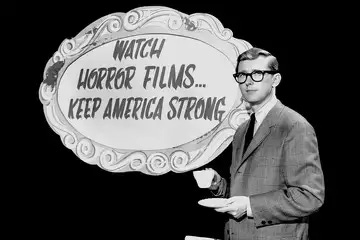
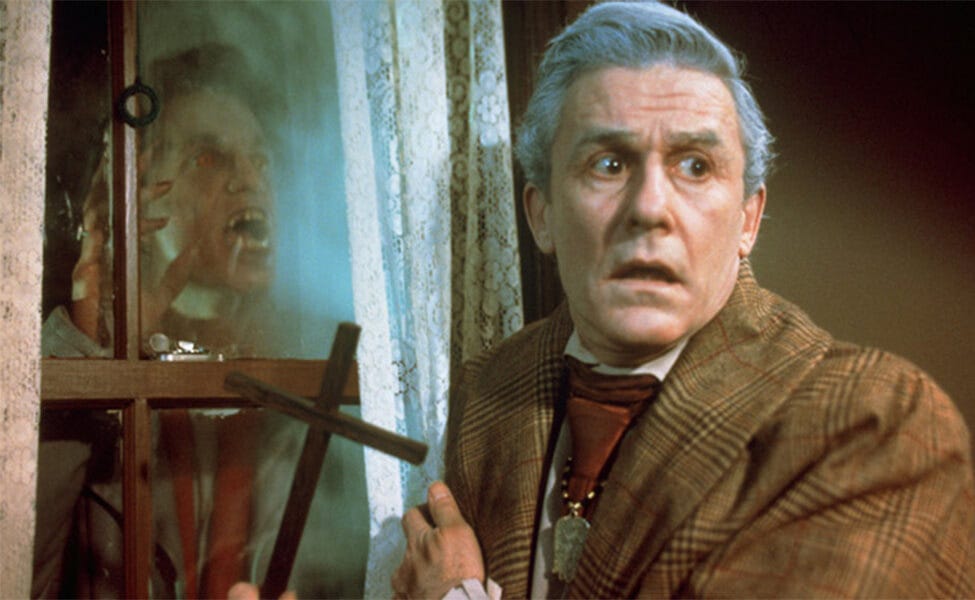
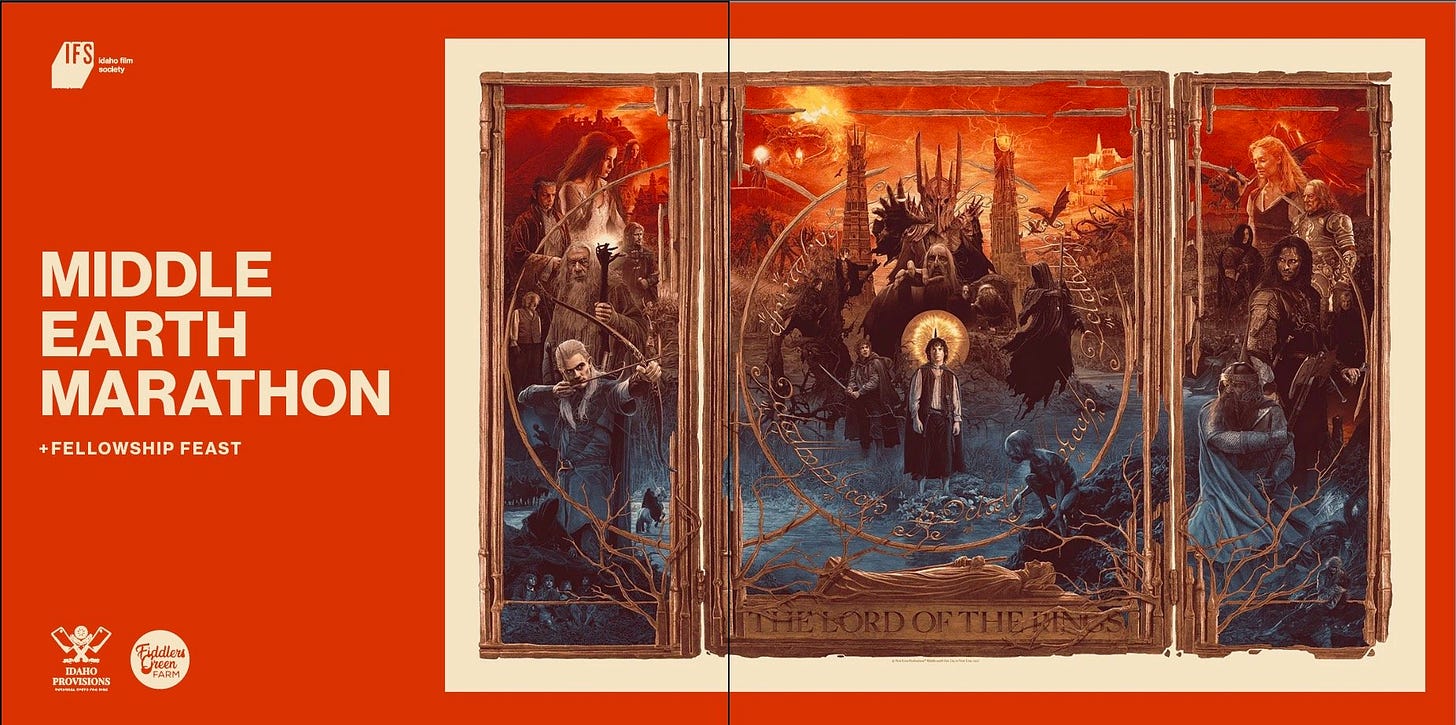
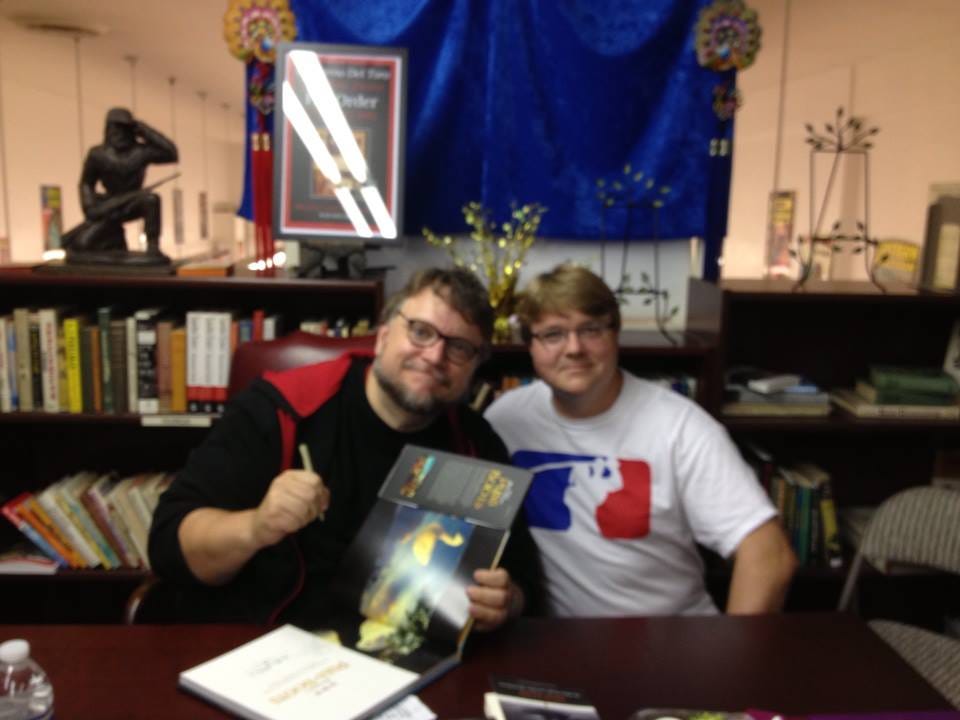




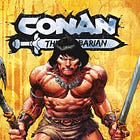
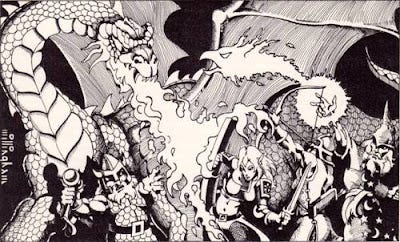
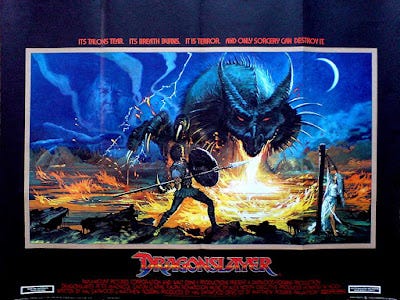
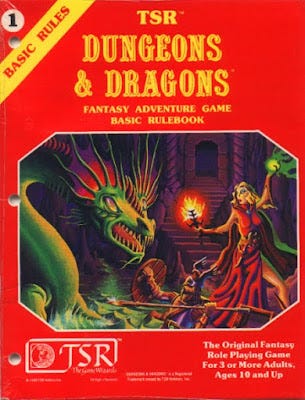
I loved your focus on those three vocalists. I never got to see Steve Perry perform live, but Brad Delp and Chris Cornell delivered some of my favorite concert memories. And it is so bittersweet to listen to either of them now.
Dude - this edition was PACKED full of cool stuff! I recently have kept proclaiming that I'm not a "horror" guy, yet keep uncovering proof otherwise. The Evil Dead series being a prime example. Now, with your reminder, I have to admit that I loved the Svengoolie and Elvira series that showed the old campy horror stuff. I also fondly remember "Up All Night with Rhonda Shear" on the USA Network.
Love the discussion on the Holmes and Moldvay D&D Basic sets, and how cool is it you got to meet Guillermo del Toro! (I'm also laughing how your wife made you promise that she didn't have to watch Trancers IV - XXXIV!!!)